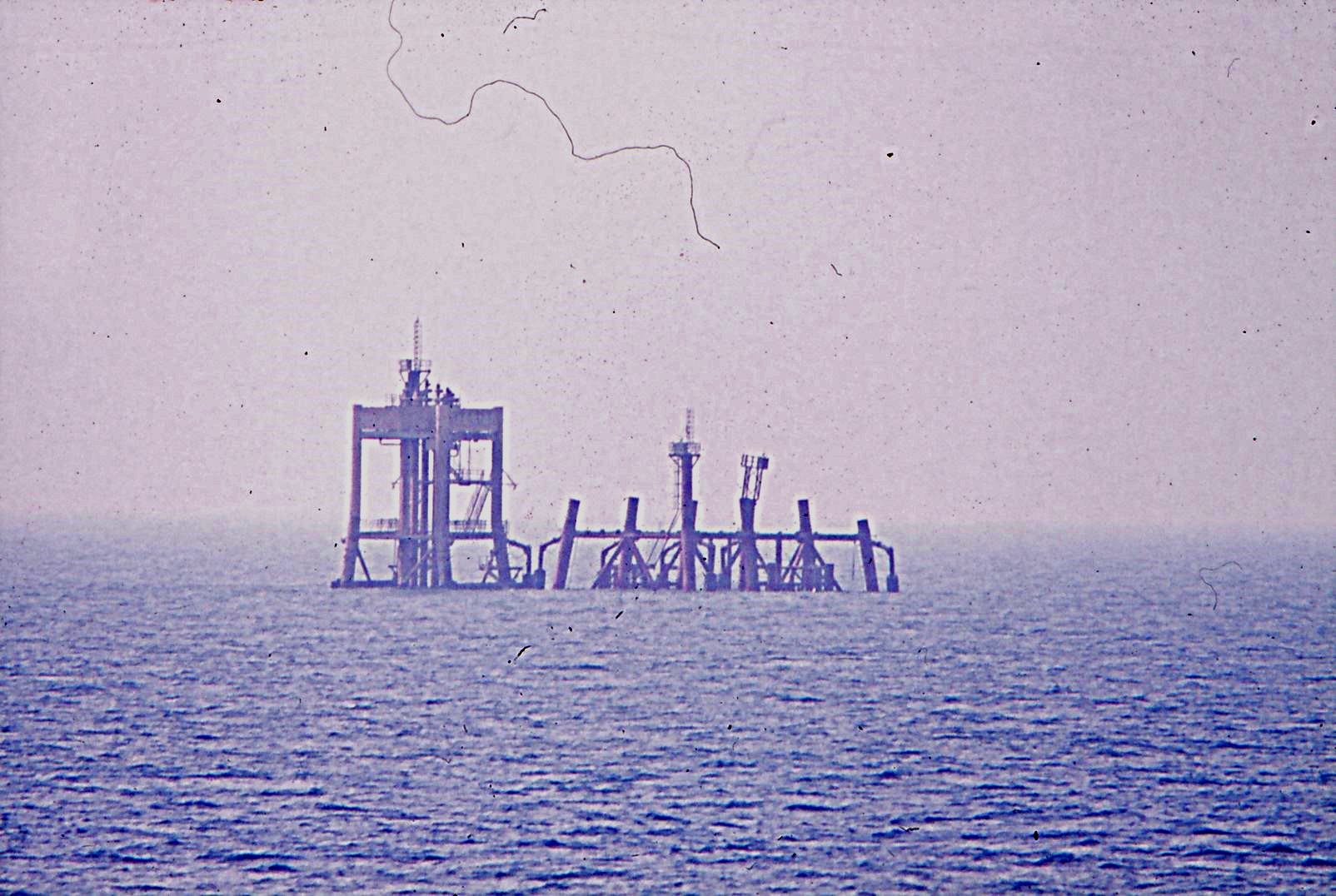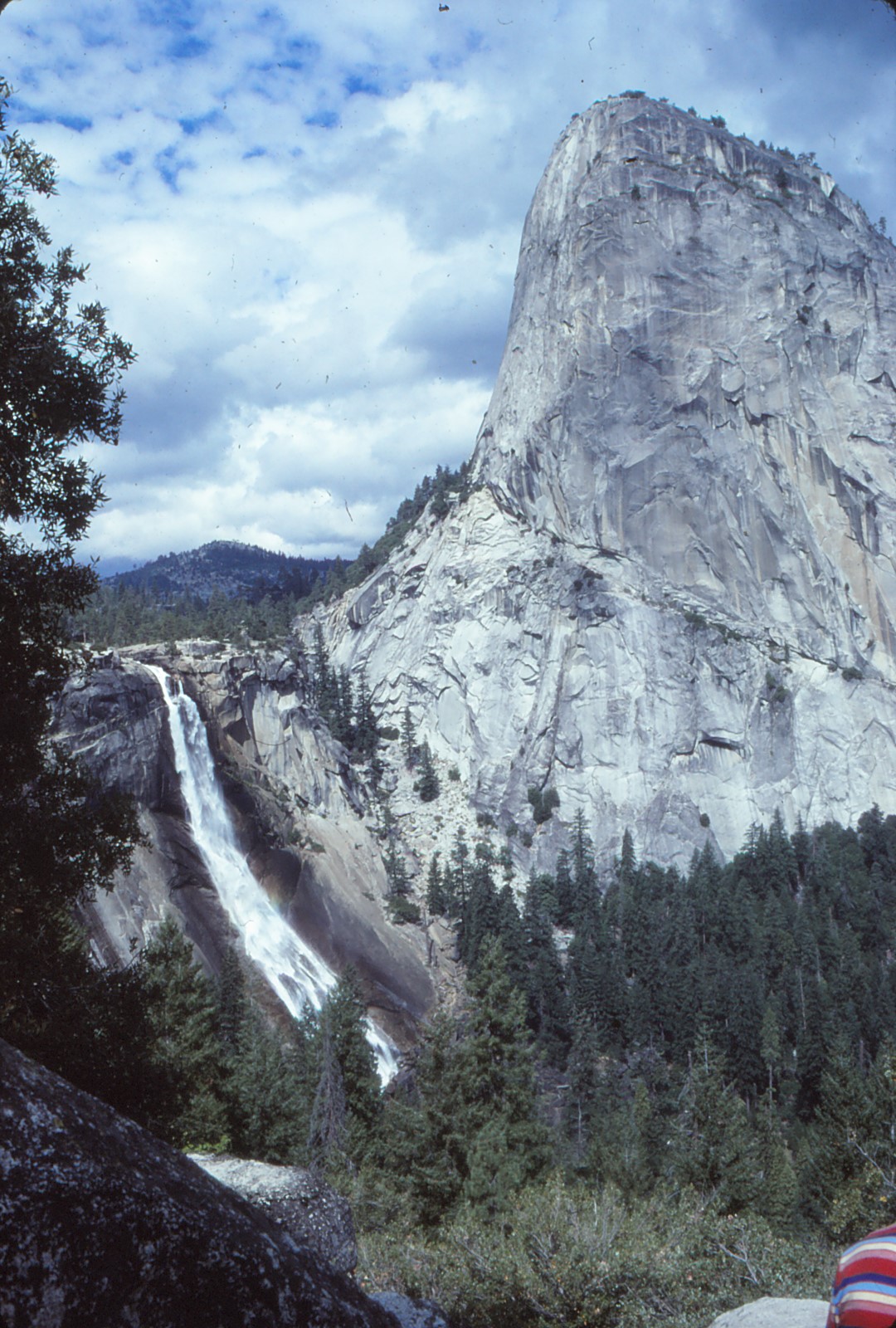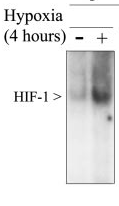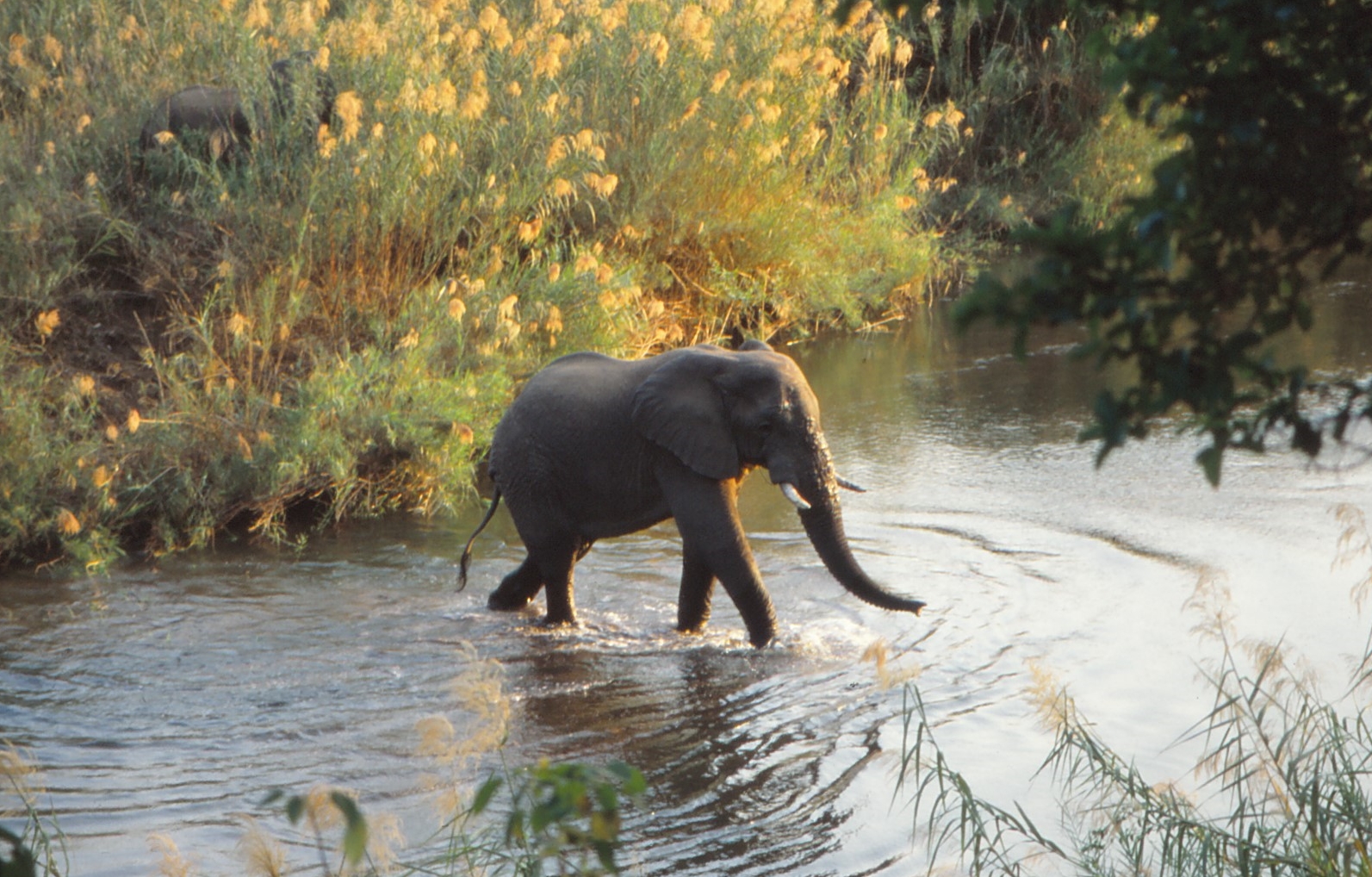Rhythmic functions are disturbed by environmental changesSunnuntai 2.2.2020 klo 19.39 - Mikko Nikinmaa Virtually all physiological functions show circadian and seasonal rhythms, with light (day and night, long daylength in summer and short light period in winter) as the major synchronising factor. Light-temperature interactions have been used as reliable indicators by animals for timing of reproduction, winter sleep or hibernation, changes of protective colouring and so on. The temperature increase associated with climate change has made light rhythm unreliable predictor of suitable time to carry out the function that has evolved to use the light rhythm as a reliable cue. As an example, short daylength has indicated to hares that it is time to change to white winter colouring. Since the temperature has increased so that there is no snow in latitudes, which earlier had it, the light cue results in white hares in dark background. Foxes certainly like easy hunting. There are various temperature-dependent responses of fish, which are signalled by light rhythm. Because of light-temperature interactions have rapidly changed, it is, for example, possible that hatching of fish takes place at a time that the larvae have no food after the yolk sac has been used up. In addition to the increase of temperature the oceans are suffering from decreased oxygen level (hypoxia). Hypoxia disturbs the generation of rhythms. Also, several environmental pollutants found in the aquatic environment affect rhythms. Consequently, temperature changes, hypoxia, and environmental contaminants affect aquatic life by affecting rhythmic functions. Because of this and because of interactions between temperature, hypoxia and contaminants, effects on sea life can occur after much smaller changes of any of the environmental conditions than hitherto supposed. |
|
Kommentoi kirjoitusta. Avainsanat: climate change, hypoxia, environmental contaminants |
Combatting Climate Change requires Environmental Globalism - thinking nationalistically or regionally is not enough to tackle most environmental problemsKeskiviikko 29.1.2020 klo 18.14 - Mikko Nikinmaa Nationalistic movements have gained ground during the recent past – Brexit, “America First” as prime examples. This is a sorry situation, because virtually all environmental problems are global. You can find a pollutant that originates from a factory in New York in a whale caught off the coast of Iceland. The foreign molecules are found in the Antarctic ice. The clothing we wear in European countries causes pesticide pollution, dye pollution, and decreased water availability throughout the cotton-producing countries. The nationalistically thinking circles always forget this, and say that “we are doing our share of combatting environmental problems.” To be able to say this, they should not use any t-shirts which use cotton grown in India and made in a factory in Bangla Desh. In buying and using these clothes the people are outsourcing the environmental pollution. If the nationalistic circles were actually thinking of their responsibility to the environment, they would pay for the expenses needed for proper water treatment in factories producing the clothes or their dyeing units. The global nature of environmental problems is clearest in combatting climate change. For example in Finland the nationalistic circles say that any industrial production in Finland is actually an action against climate change because of the strict environmental standards required here. This is the major point of environmental globalism. The same high environmental standards should be required everywhere on the globe, and the buyers of the products should pay for the improvements of environmental standards. Otherwise the buyers of the products are taking a free ride at the expense of the environment. Naturally it is not the environment we see every day, but the pollutants can later affect our everyday life. |
|
Kommentoi kirjoitusta. Avainsanat: environmental pollution, energy production, carbon footprint |
California shows that environmental actions are better than their lackTiistai 12.11.2019 klo 19.42 - Mikko Nikinmaa Throughout the 20th century California was the centre of film, tv and entertainment business. However, in my mind the state became front-running in the world with “If you’re going to San Francisco”. In late 1960’s and throughout 1970’s California was faced with a major environmental problem, smog, which was caused by the exhaust fumes of cars. Also, the lead concentration on roadsides had increased to toxic levels. To remedy these problems cars were required to use unleaded fuel and catalytic converters were installed in new cars. The rest of USA and Europe followed California in this major environmental step. As a result, poor air quality is not seen in California, but is a HUGE problem in India. After 1970’s California has always introduced environmental One can easily understand, why Californians see the need for climate actions. Because of the drought and high temperatures, most likely caused by climate change, grave wildfires have become a yearly phenomenon in California, just as in Australia, parts of Africa and Southwestern Europe. Naturally Trump government denies any connection, and only says to concerned Californians: “Stop whining.” Yet, since California has clearly shown that environmental actions can be more economically profitable than reducing environmental requirements and stopping climate actions, Californians and the rest of the world could say to Trump: “Stop lying. Environmental actions don't ruin the country, your policies do.” |
|
Kommentoi kirjoitusta. Avainsanat: climate change, environmental legislation |
One Earth - Multidisciplinary Journals Emphasize the Earth's LimitsMaanantai 4.11.2019 klo 18.13 - Mikko Nikinmaa It is increasingly becoming apparent that the Earth has limits, as warned by scientists already in the 1970’s. The Club of Rome gave out the report Limits to Growth in 1974. Even before that the worries about the impact of increasing human population had been expressed (Paul R. Ehrlich, Population Bomb, 1968). However, marked media attention of the limits of the Earth has first been gained in the last couple of years because of climate change. The scientific world is now having new multidisciplinary journals. Cell Press (Elsevier) has started the journal One Earth, which in the editorial of inaugural issue says the following: “Climate change is not the only grand challenge we face. Springer-Nature has plans of starting a similar journal. Common to the new initiatives is that they see the need to combine humanistic, social and economic studies to what has earlier only been the mandate of environmental scientists. There is, indeed, a huge need for this, as the outset of economic theories and politics is continuation of growth. To change the outset to sustainability in the world with limits is needed, if we want to have a peaceful and orderly change to sustainable life. All too often one hears that “there are many opinions about climate change”, even though virtually all scientists studying climate-related phenomena agree on the topic. The different opinions are often those of people, who are focussing on one question they are familiar with, without noticing that the uncertainties caused by the phenomenon have been taken into account in the climate research. What is really worrying is that many of the problems have been known by fossil fuel industry for decades, but have been hidden in order to make big profits. Regardless, even if there were no climate change, the planet has limits, and the other challenges mentioned above remain. What has long remained within the circles of environmental scientists, should now be discussed and implemented in economic theories and politics. Hopefully the multidisciplinary journals will be read by humanistic, social and economic scientists, and politicians. There are still possibilities to change attitudes from growth to sustainability, but it cannot be done without political and economic leaders. |
|
Kommentoi kirjoitusta. Avainsanat: climate change, environmental pollution, sustainabbility, growth |
Overuse of the Earth is the Problem: Climate Change is just a SymptomPerjantai 1.11.2019 klo 18.38 - Mikko Nikinmaa Climate change is a question that has filled the media because of its potential effects on all aspects of life on the Earth. In the coverage of climate change, it has become THE PROBLEM. If we can solve it, life can continue with small disturbances. In view of this, different technological solutions to combat carbon dioxide increase have been offered. Mainly they concentrate on stopping the use of fossil fuels, changing the food preferences, removing carbon dioxide from the air and stopping overconsumption. The good ne The bad news is that even if the presently gravest symptom of Earth’s overuse, the climate change, can be stopped as a result of technological advancements, that does not stop the real problem: the overuse of Earth. There are two major components of this, population growth and consumption growth. Population growth demands more food production, and the increasing population in the presently poor areas will want to improve their living standards closer to, e.g., Europe. However, the food production with present agricultural methods has decreased the fertile soil by 50-70 %. Also, the present type of food production requires insecticides, herbicides and other pesticides, and artificial fertilizers. Already with the present population the pesticide use causes decrease of beneficial insect populations, which are required for the growth of berries, fruits and many oil-producing plants. So one would need to revert to environmentally friendly agricultural production. The problem is that consequently the production will decrease and will be unable to feed the presently increasing population. Because the fertility of land decreases, also new areas need to be taken to agriculture. This is difficult, since most of arable land is already in use. The increasing population also needs more space, and consequently habitation takes agricultural land and forest. As a result biodiversity decreases. With regard to consumption, it is difficult to decrease environmental pollution even if recycling and water treatment technologies are effective. There are always people, who do not follow good practises, and developing areas do not see the treatment of wastes and water purification as priorities. Consequently, environmental pollution continues to increase throughout the world. Both aquatic and terrestrial organisms will be affected. Thus, one can say that even if there were no climate change, other drastic symptoms of Earth’s overuse would be in the news. The basic problem is that limitless growth is the basis of economy in a planet which clearly has limits. |
|
Kommentoi kirjoitusta. Avainsanat: biodiversity, environmental pollution, population growth, agriculture |
Nobel Prize for Oxygen Sensing and Hypoxia: the Environmental Relevance of PhenomenaTiistai 8.10.2019 klo 9.37 - Mikko Nikinmaa One of the most conspicuous changes that occur in the aquatic environment is the increasing occurrence of hypoxic areas. The Nobel Prize in Physiology and Medicine is this year given to three scientists, Kaelin, Ratcliffe and Semenza, who have studied and discovered the mechanism of how oxygen deficiency controls gene expression in man. Compared to air-breathers, fish and other aquatic animals must get by with 1/30th of the oxygen concentration. They are further faced with marked variations in oxygen level both daily and seasonally (or unknown periods of time). Further, since fish are poikilothermic, temperature changes affect their oxygen requirements conspicuously. The oxygen sensing and transport system of fish must therefore be more v Given that oxygen is a limiting factor in aquatic environment, it is no surprise that HIF system in fish has evolved differently in different fish groups depending on their oxygen requirements. In continuation, the possibilities of fish to adapt to climate change and environmental pollution are markedly affected by what their HIF system is. Thus, the Nobel Prize winning studies have a significant environmental angle. This has been reviewed to some extent in Nikinmaa, M. and Rees, B.B. (2005) Oxygen-dependent gene expression in fishes. Am. J. Physiol. - Regul. Integr. Comp. Physiol. 288, 1079-1090 and in Prokkola, JM and Nikinmaa M (2018) Circadian rhythms and environmental disturbances - underexplored interactions. J. Exp. Biol. 221, jeb179267. The evolution of HIF system in animals was explored in Rytkönen KT et al (2011) Molecular Evolution of the Metazoan PHD–HIF Oxygen-Sensing System. Mol. Biol. Evol. 28: 1913-1926. |
|
Kommentoi kirjoitusta. Avainsanat: climate change, temperature, hypoxia, evolution, environmental pollution |
Phenotypic plasticity- a key to environmental responsesMaanantai 23.9.2019 klo 16.54 - Mikko Nikinmaa We have argued that individual variability is very important in responses to toxicants, not just unwanted noise (Nikinmaa and Anttila 2019. Individual variation in aquatic toxicology: Not only unwanted noise. Aquatic Toxicology 207, 29-33; the article is open access, so everyone is free to read it). Reading all the work nowadays with the outset that plasticity is integral to environmental responses convinces me more and more that plasticity of the responses of animals and individual variability are very much overlooked features in how animals can tolerate environmental changes. Just recently, scientists from Israel (Segev et al 2019. Phenotypic plasticity and local adaptations to dissolved oxygen in larvae fire salamander (Salamandra infraimmaculata). Oecologia 190, 737-746) exposed salamander larvae from stream and pond environment to normoxia and hypoxia. The hypothesis was naturally that, since stream larvae never get exposed to hypoxia whereas pond larvae do, pond larvae would respond more to hypoxic conditions than stream larvae. A simple measure of responding, a change in gill size was taken. However, the results show that regardless of the origin of the larvae, the gill size change between normoxia and hypoxia was the same. This is possible only if the animals can respond plastically to oxygen level. If plasticity is great, and is maintained, genetic changes are not required for environmental responses. In fact, genetic changes are a worse alternative than large plasticity within a genotype, since variation achieved by genetic heterogeneity will decrease as soon as conditions are such that some genotypes of the population will not tolerate them. That will not happen, if the variance is a property of one plastic genotype. |
|
Kommentoi kirjoitusta. Avainsanat: environmental adaptation, variability, hypoxia |
Iron availability limits well-being of fish in open oceans?Maanantai 16.9.2019 klo 11.46 - Mikko Nikinmaa Iron is essential for production of haemoglobin and many enzymes (e.g. cytochromes, which include most detoxification enzymes). It is known that iron availability is very low in some parts of the open ocean, notably the Southern Seas, areas around Antarctica. It is also known that iron availability limits phytoplankton growth in the oceans. A recent article in Frontiers in Marine Science (Galbraith et al (2019) Growth Limitation of Marine Fish by Low Iron Availability in the Open Ocean. Frontiers Mar Sci 6:509) argues quite convincingly that this may be the case also for fish. One of the good points made by the authors is that the icefish without haemoglobin have only evolved in the iron-poor waters of Antarctica, not in the much iron-richer Arctic waters, although the temperatures in both are the same, and the low temperature is usually used as the reason for the possibility to the evolution of icefish devoid of haemoglobin. If the evolution has been just a random event, the question remains: why has not this random event taken place in the Arctic? Now, because the low temperature allows it, the haemoglobinless icefish benefits immensely from not having to produce haemoglobin. Compared to fish with haemoglobin, its iron requirements are about 20 times smaller, enabling it to live comfortably in iron-poor environment. If iron availability limits the well-being of fish, it also causes problems with pollutants requiring cytochrome-dependent detoxification. Usually the detoxification system produces more cytochromes upon toxic insults. However, this may be difficult or impossible for species living in iron-poor areas. If this is the case, pollution of the Southern Seas may be a much more serious for fish inhabiting the area than, e.g. for fish living in North Atlantic. |
|
Kommentoi kirjoitusta. Avainsanat: environmental pollution, icefsh, low temperature |
World Scientists' Warning on Climate EmergencyTorstai 1.8.2019 klo 10.38 - William J. Ripple et al.
This is not written by me, but the real writers wanted it to be shared as widely as possible Mikko Nikinmaa
World Scientists’ Warning of a Climate Emergency (Condensed Version) William J. Ripple, Christopher Wolf, Thomas M. Newsome, xxxx scientist signatories from xxx countries We scientists have a moral obligation to clearly warn humanity of any great existential threat. In this paper, we present a suite of graphical vital signs of climate change over the last 40 years. Results show greenhouse gas emissions are still rising, with increasingly damaging effects. With few exceptions, we are largely failing to address this predicament. The climate crisis has arrived and is accelerating faster than many scientists expected. It is more severe than anticipated, threatening natural ecosystems and the fate of humanity. We suggest six critical and interrelated steps that governments and the rest of humanity can take to lessen the worst effects of climate change, covering 1) Energy, 2) Short-lived pollutants, 3) Nature, 4) Food, 5) Economy, and 6) Population. Mitigating and adapting to climate change entails transformations in the ways we govern, manage, feed, and fulfill material and energy requirements. We are encouraged by a recent global surge of concern. Governmental bodies are making climate emergency declarations. The Pope issued an encyclical on climate change. Schoolchildren are striking. Ecocide lawsuits are proceeding in the courts. Grassroots citizen movements are demanding change. As scientists, we urge widespread use of our vital signs and anticipate that graphical indicators will better allow policymakers and the public to understand the magnitude of this crisis, track progress, and realign priorities to alleviate climate change. The good news is that such transformative change, with social and ecological justice, promises greater human wellbeing in the long-run than business as usual. We believe that prospects will be greatest if policy makers and the rest of humanity promptly respond to our warning and declaration of a climate emergency, and act to sustain life on planet Earth, our only home.
William J. Ripple email: scientistswarning@oregonstate.edu |
|
Kommentoi kirjoitusta. Avainsanat: climate change, environmental economics, population growth |
Cigarette Butts - a Major Source of (Micro)plasticsSunnuntai 28.7.2019 klo 20.37 - Mikko Nikinmaa In about 1970 a survey was made in Finland about the different types of trash in the environment, and I made a similar survey on the roadsides and beaches of South Wales. The most common type of trash was cigarette butts. At least 80 % of smokers have thrown smoked cigarette butts to the environment. They may not be as visible as larger trash, but as already the early surveys indicate, easily found, and in beaches a significant nuisance just as trash. However, cigarette butts are not just a nuisance. Cigarette filters are plastic. Apart from tyre wear particles they are probably the most important source of aquatic microplastics. The problem with plastics from cigarette filters is that they have high concentrations of all the toxins that cigarettes have. Since the toxins, e.g. the ones causing lung cancer in humans, are lipophilic, they adsorb to the plastics in the filters, and even when the filter is broken up to microplastics remain attached to the plastics. This means that whenever animals eat plastic particles, they will get much toxic compound, which are easily absorbed in the intestine, where lipophilic compounds easily cross intestinal epithelium. This “Trojan horse”-type behaviour makes the cigarette butt-derived microplastics much worse pollutants than any other plastics even if other plastic particles can also have smaller amounts of adsorbed harmful substances. Pictures of ingested cigarette butts in fish intestine have been circulated. However, small microplastic particles are ingested by planktonic organisms such as early life stages of fish and water fleas. It has been shown that fish development is disturbed by cigarette butts, and indicative of the harmful toxins being involved, the developmental disturbances are more severe for smoked cigarette butts than for unsmoked ones (Lee & Lee 2015. Ecotoxicology and Environmental Safety 113, 362-368). With regard to zooplankton such as daphnia, they ingest microplastics, and ingestion of microplastic particles can cause at least experimentally induced population decreases (Bosker et al. 2019. Environmental Pollution 250, 669-675). So tobacco smoking affects also environment and people, who are not in any contact with smoke. In the plastic pollution, it is an important component, I would say a major one in Europe and North America. Furthermore, it could be completely finished: stop smoking or if you cannot do that, do not throw your cigarette butts in environment. |
|
Kommentoi kirjoitusta. Avainsanat: environmental pollution, aquatic toxicity, conservatio |
Global Environment Tax - for the Survival of the EarthSunnuntai 9.6.2019 klo 18.08 - Mikko Nikinmaa It is an undeniable fact that the Earth’s resources and possibilities for production are overused. Another indisputable fact is that the wealth in the world is very unequally distributed. A third fact almost universally accepted is that companies move their production to cheap countries and that companies and individuals often go to great lengths to pay as little tax as possible. These facts have resulted in the most inappropriate response that is possible: the rise of populism striving for nationalistic isolation. The solution could have been appropriate a hundred years ago with less than two billion people, virtually no mass communications and no means for rapid transport possible for common people. However, today we must accept that we live in one world, and that what is happening in, e.g., India will affect us in, e.g., Scandinavia. It doesn’t help us much if we can say that “our nation has done everything correctly, but we are going under because other nations have not done enough”, when the environmental problems such as climate change, environmental pollution and food shortages make life intolerable. Thus, only global solutions can be sustainable. However, up to now globalism has only been associated with favouring the rich. All the international negotiations have had the dividing line between developed and developing nations. Both outsets must be changed if we will have sustainability and will leave habitable Earth to our grandchildren. A balanced solution to this would be a progressive global environment tax (GET). The funds collected this way would be used for urgent environmental needs throughout the world. Below a certain adjusted (one needs to take into account absolutely necessary expenses required for warming the houses and clothing that differ between warm and cold climates) level of income there would be no tax, and tax would be increased with income. This would ensure that inhabitants from low- and high-income areas would pay justified tax. The tax should also be paid from property to make it impossible to |
|
Kommentoi kirjoitusta. Avainsanat: climate change, environmental pollution, developmental aid |
Changes in Individual Variability - an Important Component of Environmental RsponsesPerjantai 31.5.2019 klo 16.35 - Mikko Nikinmaa Sexual reproduction maximizes the variability of offspring to parents. Variability is the basis for natural selection and consecutively evolution. These statements are generally accepted. In view of this, it is amazing that individual variability is relegated to noise or error in much of experimental biology: we talk about “standard error of the mean” and “confidence interval”. However, the error component, which relates to inaccuracies in measurements represents only a small percentage of variation in biological measurements. Variability is actually tested in most articles, but not because it is thought to be important in itself. The homogeneity of variance is tested in order to evaluate, if parametric statistical testing of the mean can be done, if data transformation (e.g. logarithmic transformation) must be done before parametric testing is possible or if one must resort to non-parametric statistical testing. When reading toxicological and physiological articles, one started to get the feeling that many if not most of them showed that data were heterogeneous. Therefore, we (Nikinmaa and Anttila, Aquatic Toxicology 207, 29-33;2019) went through a whole host of recent articles and found that more than 80 % of the ones which reported homogeneity/heterogeneity of data found heterogeneity. Thus, the original gut feeling that the different experimental groups had different variances, appeared correct. The change in variability is important in identifying an occurrence of an environmental response, if it can occur without a change in the mean value measured after the treatment. Again, looking at the published literature, this seemed to be the case: in many if not most studies, a change in variability occurred even when no change in the mean value occurred. To ascertain that this was not only appearance, we tested if variance could change without a change in the mean using the water-soluble fraction (WSF) of crude oil and measured the oxygen consumption rate of Daphnia. The results unequivocally showed that WSF decreased the variability of oxygen consumption rate without affecting its mean value (Nikinmaa et al., Aquatic Toxicology 211, 137-140; 2019). Thus, a change in individual variance can signify an environmental response. Presently, it is not known, to what extent this occurs, since experimental designs have not explored this possibility. There can be many different reasons for individual variability. One is that the studied animals usually present various genotypes, which may respond differently. This is, undoubtedly, an important component in generating variability. However, differences between individual Daphnia occur even though the animals are genetically identical. Actually, large non-genetic variation can have significant beneficial survival value for an organism, if the environment has cyclical changes with each portion of the cycle lasting for some generations: for example, if large variability with regard to temperature tolerance is achieved via the population consisting of several genotypes, each having small variation in tolerated temperature, an increase in temperature will wipe out all the other genotypes except the ones tolerating high temperatures. If the temperature then decreases, the high temperature-tolerant genotype cannot survive. If, on the other hand, the wide temperature tolerance is non-genetic, acclimation to high temperature will not affect the low-temperature tolerance, and some individual will survive the low temperatures. In natural populations it must also always be remembered that the exposures and environmental conditions by different individuals are not truly identical, whereby, e.g., life-time toxicant exposure can vary. As a conclusion, it is quite clear that changes in individual variability can constitute an important component of environmental responses. It could be very valuable for environmental biology, if scientists re-explored their datasets concentrating on changes in variability instead of the mean. This would give us information about the role of changes in variability in environmental responses very rapidly.
|
|
Kommentoi kirjoitusta. Avainsanat: animal personality, environmental biology, biomonitoring, environmental toxicology |
SETAC (Society for Environmental Toxicology and Chemistry) in Helsinki 26.-31.5.Sunnuntai 26.5.2019 klo 13.26 - Mikko Nikinmaa This coming week more that 2000 environmental scientists meet in Helsinki discussing many different aspects of environmental contamination, starting from indoor air quality ang going to endocrine disruption in wildlife. Presentations include those on nanotoxicology, plastic pollution and climate change. Thus, pressing environmental problems are handled by a wide internationel group of experts. My personal input in the meeting is a session on individual variation in toxicological responses, which I wll discuss here later. |
|
Kommentoi kirjoitusta. Avainsanat: environmental polllution, aquatic toxicology |
Growth Economy - Enemy of Habitable EarthKeskiviikko 22.5.2019 klo 20.29 - Mikko Nikinmaa Throughout the world politics is centered around maximal economic growth. When the economic growth of a nation is smaller than the average, the politicians and the media are depressed and almost think that the end of the world has come. However, that is not the cause of the end of the world, but growth itself is. Analogy to maximizing economic growth is a car with no visibility - one does not know what happens if you increase the speed. The earth is the car with no visibility. In the case of driving a car, with decreasing visibility, you decrease the speed to enable you to respond to any problem. You certainly would not increase speed, but that is what is done with economic growth. One does not know what happens to the Earth, but growth must be speeded up. The concepts of growth economy were formulated when the human population was one fifth of what it is now and there seemed to be unlimited space and resources. This is not the case any more. The human population is so large that it inevitable leads to the use of land, energy and resources in such a way that the future use is affected. As two negaive results of this we have climate change and biodiversity loss. Despite the clear negative effects of growth, both population and economic growth are the primary goals of politics. It seems almost impossible for politicians and other decision makers to realize that they are behind all the problems that the right-wing populists are utilizing. If the resources and space were unlimited, there would be no refugees, no climate change etc. So continuing with the concept of growth is plain silly. The growth has been possible by taking a loan from nature, i.e. a loan from future generations. This is not sustainable. So the concept of natural capital must be introduced into main focus of political and economic thinking. The outset of any political and economic decision should be that anything done is neutral to the environment (if a decision causes a deterioration of one aspect in environment steps should be made to compensate for it in other environmental features). If we decide to accept that growth is changed to zero effect on environment, the problem is that many negative effects of growth will continue for a long period of time. If, for example, we are able to decrease the number of children to a level that in the long run will stop population growth, the population increase will continue for the period of time that the present children grow up to fertile age. Similar examples can be found in virtually all aspects of life. However, we must not resort to thinking that the lack of effects in the short term shows that the measure is not effective. What we need to do is putting all our efforts to change from growth economy to sustainable solutions. |
|
Kommentoi kirjoitusta. Avainsanat: natural capital, cliamte change, environmental pollution |
Our PlanetLauantai 11.5.2019 klo 18.35 - Mikko Nikinmaa The Our Planet documentary series by David Attenborough in Netflix (www.ourplanet.com) is incredibly good, and will probably be the most popular pro-environment series that has recently been published. When watching it a couple of things must be remembered. Although climate change is of a huge concern, the short-term solutions alleviating it will not solve the basic problem, which is our overuse of the planet. Climate change is just one symptom stemming from the facts that there are too many people who are overusing Earth's resources. In November 2, 2018 I wrote a blog, where pictures of human population change and the increase of world's carbon dioxide were side by side. And they could be superimposed. Further, although it could be possible to severe the link between human population and carbon dioxide production in the short term, the vicious circle between population growth, resource overuse, pollution and climate change still exists in longer term because of the following. Human population needs to be fed. The intensive agriculture with artificial fertilization and pesticide use has increased the agricultural production per hectare to 5-10 times the crops obtained before "industrial" agriculture. It has been estimated that without the use if artificial fertilization and pesticides the maximal size of human population would be 2-3 billion. However, Nature presently strikes back. Fertilization pollutes our waters, pesticides kill pollinators and the microalgae of the seas. The results arte that aquatic pollution is decreasing the ability of algae to photosynthetize. The aquatic algae have contributed to 50 of the carbon dioxide sinks of the world. Now it is estimated that carbon dioxide fixation by them has decreased by 20 %. Aquatic pollution thus drives climate change. Pollinating insects die as a result of insecticide use. Since about 2/3 of all the food plants need pollination by insects, this as such reduces the possibilities of increasing agricu Apart from cutting rainforests, the most pronounced biodiversity losses are caused by overfishing. Most fisheries at the moment are unsustainable, and aquaculture does not help the situation, as most of the fish feed is made from fish. So, the only change that happens is that for human food less preferred species are caught. An additional problem with aquaculture is the use of antibiotics and pesticides, which affect marine life and be one component of generating antibiotic resistance in the environment. Besides the decrease of marine biodiversity, especially the large amount of plastic waste in the oceans is an anthropogenic problem. Here an important step forward was taken a day or two ago, whem most countries in the world agreed that plastic waste may not be exported. This will generate national recycling of plastics. Notably, Trump's USA did not sign the agreement. The present government of the USA has been very consequent in the anti-environment actions, opposing any actions which could be seen as trying to improve the state of environment. The US government after Trump will have much to do to reverse the anti-environmental actions of the present government. If it weren't for plastics, it is likely that there would be other tash all over the place. Different materials, which could be recycled are just thrown away. For example, much of the metals could be reused which would much reduce the need for mining and theeby overuse of world's resources. In conclusion, we would need to find ways both to decrease the human population and the amount of energy and resources used by a unit human. Changes in the first pertain especially to developing countries and in the second to inhabitants of traditional industrialized countries. One cannot think in terms "we will do nothing unless the others do their share", because that is a certain way to go to catastroph. |
|
Kommentoi kirjoitusta. Avainsanat: biodiversity, climate change, environmental pollution, economic growth, sustainability |
The Earth Day - 49th timeMaanantai 22.4.2019 klo 12.54 - Mikko Nikinmaa It is again Earth Day, and compared to last year the state of the earth has not improved. The predictions are gloomier and gloomier. However, there is much to be pleased about, despite the gloomy predictions. The state of environment, especially climate change and plastic pollution have become front page news. Although many people are of the opinion that one should not scare people by giving them too negative news, it appears that As a flagship for Earth day one could take Our Planet, now available in Netflix. David Attenborough (born 1926) is still avtive, and his documentary, showing different aspects of the earth clearly indicates that the beauty and diversity of world is far too great to be given up. This is so especially, as we have the means to combat climate change and other environmental problems. With regards to plastic pollution, it doesn't even require significant funds, just a change of attitude all over the world. What is worrying that plastic collected in Industrialized Western Countries has recently been found disposed in the environment in Malaysia. It is not the way that collected plastic should be found. A likely reason for such finding is that China has stopped importing plastic waste. However, the stop of import should not result in throwing the problem elsewere, it should result in treating the material where it is used. In the case of climate change, we need to be willing to set aside funds. However, most people are certainly willing to give up some of the money we have taken as loan from future generations. The problem is people, whose attitudes are from the past, when there were only 2 billion people in the world, when Europeans dreamed of big Amerrican cars and petrol was cheap and coal mines an important work place. Such people should see that thing are different now, and stop resisting actions that are needed to keep world beautiful as in Our World. |
|
Kommentoi kirjoitusta. Avainsanat: climate change, extinctions, environmental conservation |
Individual variability is the key for tolerating environmental changeTiistai 25.12.2018 klo 13.10 - Mikko Nikinmaa When animal (or plant) populations must face environmental change such as increased themperature, eutrophication etc. the greater the variability b In the case that the environment is very labile such phenotypic plasticity - i.e. individual variations in physiological function of one genotype - is better way of tolerating unfavourable environment than having genetically heterogenous populatio with one genotype tolerating that environmental problem. This is because the plasticity of the individuals that tolerate the unfavourable environment is as large as that of the original population. If, however, the tolerance depends on the genotypic variation, it is likely that the overall plasticity of the tolerant genotype is smaller than that of the original, genetically variable population. Genetical variability can be of significant benefit only in cases where the change is to one direction. The possible importance of measures of individual variation in environmental response has recently been discussed in our article (Nikinmaa and Anttila, Aquatic Toxicology, 207, 29-33; open access). Our experimental results on oil-exposed water fleas also indicate that a change in individual variability can occur even when no change is seen in the mean of the measured parameter. |
|
Kommentoi kirjoitusta. Avainsanat: climate change, environmental pollution, phenotypic plasticity |
Indirect Effects of Toxicants - Why Contaminants Shown to Be Nontoxic to Animal Cells Can Cause Harm?Torstai 6.9.2018 klo 11.44 One occasionally sees reports, which clearly show that the concentrations of toxicants in the environment are a million times smaller than those required to cause any effects in animal cells. Yet, other equally carefully done studies show that animals are affected by the concentrations occurring in the environment. This discrepancy often occurs in the case of herbicides. Nowadays they are usually molecules, which do not take part in any metabolic pathways of animal cells. The simplest explanation for indirect effects in the case of herbicides is that changes in vegetation affect the well-being of animals by affecting the possibilities for hiding, by changing visibility etc. However, occasionally such effects are not adequate to explain observations. In such cases it is possible that the toxicant affects the microbiota of animals, and the changes occurring are such that the overall health of the animal is affected. We and all animals have billions of micro-organisms in our body. Some of the organisms have the pathways targeted, e.g., by herbicides. Consequently the microbial communities in animal body will be modified. Research has already indicated that changes in microbiota can influence immunity, digestion, nervous system, affect allergies etc... An important point to note here is that if only cellular toxicicity is studied, the results indicating that the toxicant is non-toxic to animal cells is correct. It is only, because the microbiota of the animal is affected, and the poorly known signals, required for good animal health, influenced that adverse, indirect effects on animals are seen. This being the case, cell toxicological studies cannot replace studies on intact animals, when trying to uncover the risks of a chemical to the environment. |
|
Kommentoi kirjoitusta. Avainsanat: microbiota, environmental pollution, herbicide |
Voluntary actions in conservation - a dream or realityTorstai 21.6.2018 klo 9.50 - Mikko Nikinmaa In many cases it is said that environmental actions can be voluntary, that people themselves see if they are required or not. This is wishful thinking. Environmental actions are needed and can be done as long as it is other people doing them, no the persons themselves. Just as an example, a scientific conference of environmental scientists gave a possibility of paying a fee for the carbon footprint caused by travelling to the conference. The fee was at three different levels. Of the environmental scientists only approximately 40 % paid any fee at all, and virtually everyone who paid, paid only the lowest fee, although it was much less than can be estimated to be the environmental cost of travelling. And this was a group of environmental scientists!!! If the general public is even less concerned about the environment, the noble principle that people voluntarily consider what their actions mean to the environment, and in case they cause deterioration of one aspect, other actions are done to remedy the damage (in another environmental dimension). Consequently, one can probably only get things done by environmental taxes and giving reliefs of them to people, who can demonstrate that they are carrying out environmentally beneficial actions. The taxes are needed, as otherwise people do not take the environment into account. However, probably more can be achieved by having incentives giving a financial benefit for good deeds to the environment. In view of the above, I bow deep to the individuals who do important deeds to help the environment without expecting anything in return. |
|
Kommentoi kirjoitusta. Avainsanat: environmental pollution, environmental economics, environmenral taxes |
The Earth DaySunnuntai 22.4.2018 klo 20.04 - Mikko Nikinmaa It is the Earth Day today. The day for global environmental questions has been around since 1970. During that time a couple of environmental problems have been more or less solved in Western Europe, but many global questions have emerged. Acid rain is not a problem any more in Europe - smoke cleaning standards have abolished it. The ozone hole has started to shrink, because the most harmful chemicals have been banned. The levels of persistent organic pollutants in the Baltic Sea have d |
|
Kommentoi kirjoitusta. Avainsanat: environment, conservation, climate change, drought |


 legislation first, and has been quite successful. Everything proceeded nicely, California took the lead in environmental actions, and other states and nations followed. The development came to the end, as many other steps forward, with the present Trump government. He has demanded that California must stop enacting the environmental regulations, because “they hurt the economy”. However, this is not true. The economic growth in California has been pronounced at the same time that the use of fossil fuels has decreased (although one should be able to stop the growth-based economical thinking).
legislation first, and has been quite successful. Everything proceeded nicely, California took the lead in environmental actions, and other states and nations followed. The development came to the end, as many other steps forward, with the present Trump government. He has demanded that California must stop enacting the environmental regulations, because “they hurt the economy”. However, this is not true. The economic growth in California has been pronounced at the same time that the use of fossil fuels has decreased (although one should be able to stop the growth-based economical thinking). Food security, water scarcity, rapid urbanization, mass migration, environmental pollution, biodiversity loss, and societal inequalities are all intricately woven into the tapestry of environmental change. These are wicked problems, intertwined and related to societal, economic, political, and behavioral dynamics and not simply physical systems.”
Food security, water scarcity, rapid urbanization, mass migration, environmental pollution, biodiversity loss, and societal inequalities are all intricately woven into the tapestry of environmental change. These are wicked problems, intertwined and related to societal, economic, political, and behavioral dynamics and not simply physical systems.” ws is that there are technological and societal solutions for stopping climate change without a need for drastic changes in everyday life – it only needs some adjustments. The worrisome problem is that there appears no sign of change in attitudes of economic leaders. In the recent report of World Economic Forum environmental questions were not even mentioned as factors to be taken into account, when considering economic development.
ws is that there are technological and societal solutions for stopping climate change without a need for drastic changes in everyday life – it only needs some adjustments. The worrisome problem is that there appears no sign of change in attitudes of economic leaders. In the recent report of World Economic Forum environmental questions were not even mentioned as factors to be taken into account, when considering economic development. ersatile than that of mammals. We have studied the oxygen sensing and hypoxia-inducible factor (HIF) system, i.e. the phenomena now awarded Nobel Prize, since the late 1990’s. First, we observed that hypoxia-inducible factor was present in cells already in normal venous oxygen tension, although it increased in hypoxia (in humans and laboratory rodents it is only found in hypoxic conditions). Second, we observed that although the hypoxia-inducible factor level was controlled posttranscriptionally, also gene transcription could be modified. The HIF transcription depended on the number of hypoxic bouts experienced by the animal (in humans the control of HIF level occurs posttranscriptionally). Finally, we observed that HIF level was affected by temperature (something that is irrelevant for us homeotherms). These facts, together with the observations of interactions between HIF and circadian rhythms and environmental pollutants show that the system given the Nobel Prize for is more versatile in poikilothermic water breathers than humans.
ersatile than that of mammals. We have studied the oxygen sensing and hypoxia-inducible factor (HIF) system, i.e. the phenomena now awarded Nobel Prize, since the late 1990’s. First, we observed that hypoxia-inducible factor was present in cells already in normal venous oxygen tension, although it increased in hypoxia (in humans and laboratory rodents it is only found in hypoxic conditions). Second, we observed that although the hypoxia-inducible factor level was controlled posttranscriptionally, also gene transcription could be modified. The HIF transcription depended on the number of hypoxic bouts experienced by the animal (in humans the control of HIF level occurs posttranscriptionally). Finally, we observed that HIF level was affected by temperature (something that is irrelevant for us homeotherms). These facts, together with the observations of interactions between HIF and circadian rhythms and environmental pollutants show that the system given the Nobel Prize for is more versatile in poikilothermic water breathers than humans. evade the tax by, e.g., investing in stock market. Further, since the tax would be global, companies could not evade it by transferring operations to low-tax nations. A question, which also has to be solved is how different nations would pay the global tax, since their involvement in the overall economy differs. The simplest solution, again taking into account the different wealth of nations, would be to have the contribution as gross national product divided by population. It would be imperative for nations to be required to contribute to the global tax fund, since they have very different roles in overall economy. Since a major environmental problem is that the world population has increased beyond what can be tolerated, the average number of children should somehow be taken into account. This could be done by including in the nation tax average number of children. The nation’s contribution would be increased, if the number of children exceeded the number calculated for a stable population. As no nation would be exempt from the nation-wide payment, this would ensure that the population contribution would be paid also by countries, where most of the inhabitants would be exempt from payment. GET would be collected by the United Nations: UN already has all the world’s nations included.
evade the tax by, e.g., investing in stock market. Further, since the tax would be global, companies could not evade it by transferring operations to low-tax nations. A question, which also has to be solved is how different nations would pay the global tax, since their involvement in the overall economy differs. The simplest solution, again taking into account the different wealth of nations, would be to have the contribution as gross national product divided by population. It would be imperative for nations to be required to contribute to the global tax fund, since they have very different roles in overall economy. Since a major environmental problem is that the world population has increased beyond what can be tolerated, the average number of children should somehow be taken into account. This could be done by including in the nation tax average number of children. The nation’s contribution would be increased, if the number of children exceeded the number calculated for a stable population. As no nation would be exempt from the nation-wide payment, this would ensure that the population contribution would be paid also by countries, where most of the inhabitants would be exempt from payment. GET would be collected by the United Nations: UN already has all the world’s nations included. nothing is accomplished unless a catastroph is imminent.
nothing is accomplished unless a catastroph is imminent. etween organisms, the more likely it is that at least some specimens are able to tolerate the disturbed conditions. Hitherto it has been virtually always been thoght that the only important thing in this regard is genetic variability. However, individual variation is possible also without genetic variation: a single genotype can have quite different phenotypes, which tolerate different conditions.
etween organisms, the more likely it is that at least some specimens are able to tolerate the disturbed conditions. Hitherto it has been virtually always been thoght that the only important thing in this regard is genetic variability. However, individual variation is possible also without genetic variation: a single genotype can have quite different phenotypes, which tolerate different conditions.  ecreased markedly as water treatment has become strictly required. These examples show that environmental problems can be solved if it is deemed necessary. Today's urgent environmental problems are climate change, and associated with it the availability of water. Solving the climate problem requires many different actions, but two are clear, changing our energy use habits, and increasing carbon dioxide fixation by plants. The most effective solution to the plastic waste problem would be to make waste collection effective everywhere and influence the attitudes of people. In the present situation, if it weren't for plastics, other types of waste would be filling our beaches and seas. Finally, the Earth is facing mass extinctions. For big mammals a solution is to stop trophy hunting completely, but in addition to the mammals, also other species are suffering from the decreased availability of suitable habitats and deaths caused by pesticides and other environmental toxicants.
ecreased markedly as water treatment has become strictly required. These examples show that environmental problems can be solved if it is deemed necessary. Today's urgent environmental problems are climate change, and associated with it the availability of water. Solving the climate problem requires many different actions, but two are clear, changing our energy use habits, and increasing carbon dioxide fixation by plants. The most effective solution to the plastic waste problem would be to make waste collection effective everywhere and influence the attitudes of people. In the present situation, if it weren't for plastics, other types of waste would be filling our beaches and seas. Finally, the Earth is facing mass extinctions. For big mammals a solution is to stop trophy hunting completely, but in addition to the mammals, also other species are suffering from the decreased availability of suitable habitats and deaths caused by pesticides and other environmental toxicants.